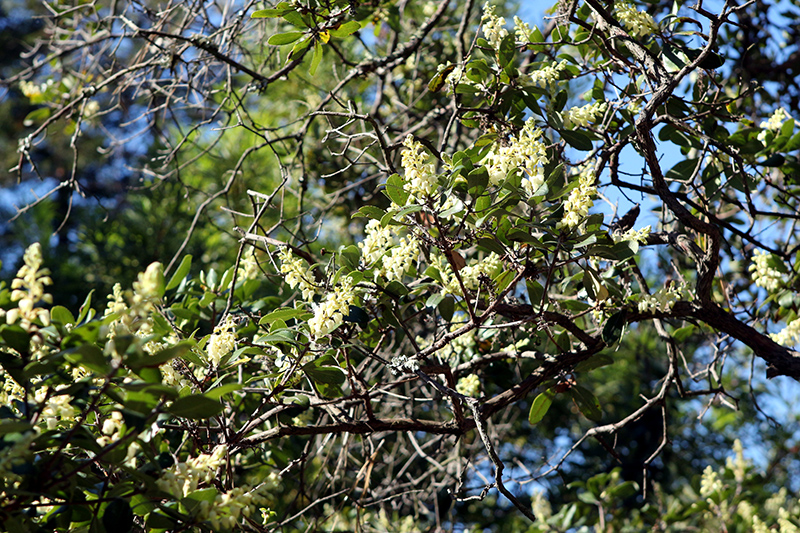Shonnard’s Nursery
Plant Finder Tool
Snow Flurry California Lilac
Ceanothus thyrsiflorus 'Snow Flurry'
Height: 10 feet
Spread: 12 feet
Sunlight:
![]()
![]()
Hardiness Zone: 8a
Description:
A fast growing large shrub or small tree with dark green glossy foliage; beautiful, pure white flower clusters add interest in the spring; perfect for screening or massing along borders; drought tolerant, but will thrive with modest summer watering
Ornamental Features
Snow Flurry California Lilac is bathed in stunning cymes of lightly-scented white star-shaped flowers along the branches from early to mid spring. It has attractive dark green evergreen foliage. The glossy oval leaves are highly ornamental and remain dark green throughout the winter.
Landscape Attributes
Snow Flurry California Lilac is a dense multi-stemmed evergreen shrub with an upright spreading habit of growth. Its average texture blends into the landscape, but can be balanced by one or two finer or coarser trees or shrubs for an effective composition.
This is a relatively low maintenance shrub, and should only be pruned after flowering to avoid removing any of the current season's flowers. It is a good choice for attracting birds, bees and butterflies to your yard, but is not particularly attractive to deer who tend to leave it alone in favor of tastier treats. Gardeners should be aware of the following characteristic(s) that may warrant special consideration;
- Spreading
Snow Flurry California Lilac is recommended for the following landscape applications;
- Mass Planting
- Hedges/Screening
- General Garden Use
- Naturalizing And Woodland Gardens
Planting & Growing
Snow Flurry California Lilac will grow to be about 10 feet tall at maturity, with a spread of 12 feet. It tends to fill out right to the ground and therefore doesn't necessarily require facer plants in front, and is suitable for planting under power lines. It grows at a fast rate, and under ideal conditions can be expected to live for approximately 30 years.
This shrub does best in full sun to partial shade. It prefers dry to average moisture levels with very well-drained soil, and will often die in standing water. It is considered to be drought-tolerant, and thus makes an ideal choice for xeriscaping or the moisture-conserving landscape. This plant will benefit from an application of bonemeal and/or mycorrhizal fertilizer at the time of planting. It is not particular as to soil type or pH, and is able to handle environmental salt. It is somewhat tolerant of urban pollution. This is a selection of a native North American species.

